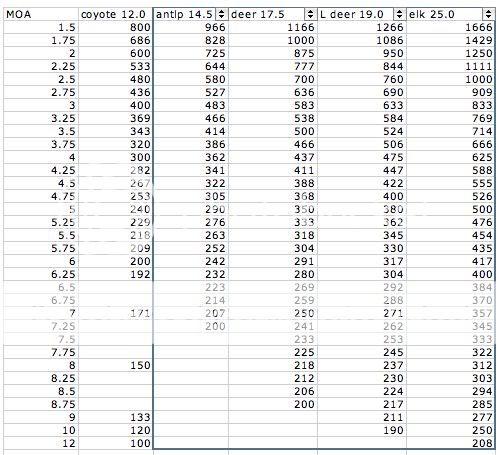How would your math work for a coyote or a PD? I like the way you simplified it.
Well, before we had rangefinders that worked past 400 yds, I used that same math on coyotes. Fact is, hunting coyotes was the reason I started using graduated reticles. First, I wanted to know the distance or approximate distance, and second I wanted to know where to hold without taking the time and additional movement of dialing knobs.
Nowdays, everyone's got a rangefinder and they work way further than reticle ranging is accurate.........
But, they don't work if the battery goes dead or if the snow is coming down heavy or if it's thick foggy.........conditions that are entirely possible when calling coyotes.
Most of the mature coyotes I've measured are about 9" back to belly. Prarie dogs vary alot, especially in the summer when the pups are out, but mature prarie dogs are about 4" wide at the base when standing and somewhere around 12" tall. Animals in different parts of the country may be different sizes though.
Target Size / MOA covered in scope = Distance
Distance X MOA covered in scope = Size of Target...............If we know the distance, the target size can be determined.
Again, this is shooters moa, not true moa. A 5% factor needs to be subtracted/added for true moa. But from 300 out to 500 yds,
maybe 600 yds on bigger game, when the rangefinder can't be used...........the reticle will still work so long as we're steady. An aproximate range is better than no range at all. Before we had reliable rangefinders, my coyote hit percentage (beyond 300 yds) went up alot due to using the reticle. Now if someone would just come out with an IPHY reticle and IPHY adjustments; that would just be too simple.

